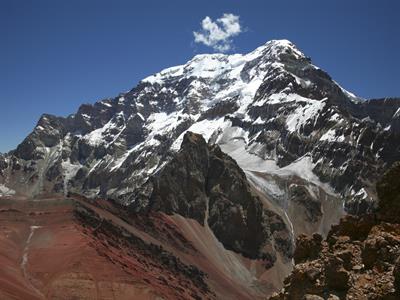PDF chapter test TRY NOW
Like North America, South America is also made of several distinct physical features ranging from majestic mountains to beautiful coastal plains.
A continent's growth is mostly determined by its physiographic features and distribution of resources, which is again determined by the continent's physiographic features.
Ok! Ready to explore the continent? Let's go!
South America stretches from the Gulf of Darién in the northwest to Tierra del Fuego's archipelago in the south. Mountains and coastal plains generally run north-south, while highlands and river basins generally run in an east-west direction.
South America has marked similarities in structure and relief of North America. South America has some of the oldest and the youngest rocks in the world. Also, South America’s extreme geographic variety contributes to the continent’s large number of biomes.
Based on topographical features, the continent may be divided into the following physiographic divisions:
1. The Andes Mountains
2. The River Basin or Central Plains
3. The Eastern Highlands
The Andes mountain:
The Andes is South America’s primary mountain system. It is also the world’s longest mountain range extending for more than 6440 km. Like the Himalayas, the Andes are also the fold mountains. It is situated on the far western edge of the continent.
The Andes is South America’s primary mountain system. It is also the world’s longest mountain range extending for more than 6440 km. Like the Himalayas, the Andes are also the fold mountains. It is situated on the far western edge of the continent.
It stretches from the southern tip to the northernmost coast of South America. There are hundreds of peaks more than 4,500 meters (15,000 feet) tall, many of which are volcanic.

Aconcagua in the Andes Range is the highest mountain in South America
The Andes' highest peak is Aconcagua, which stands at 6,961 meters (22,841 feet) and straddles the Argentina-Chile border. Aconcagua is the tallest mountain outside Asia.
The mountains run very close to the coast in Chile. On the western side, the slopes are steep and gentle on the eastern side like the Rockies in North America.
Important!
Being a part of the Pacific Ring of Fire, the Andes is subject to great volcanic eruption and earthquake activities. The Andes are also part of the American Cordillera, a chain of mountain ranges (cordillera) that consists of an almost continuous system of mountain ranges.
High plateaus are also a feature of the Andes. The altiplano, which is located in southern Peru and Southwestern Bolivia, for example, has an elevation of about 3,700 meters (12,300 feet).
The Patagonia region of Argentina and Chile consists of lower-elevation plateaus and rugged glaciers. There are some active volcanoes like Cotopaxi (5,991m) on the Andes range.
The Andes are rich in minerals like Copper, Tin and precious gems, including Emeralds.
